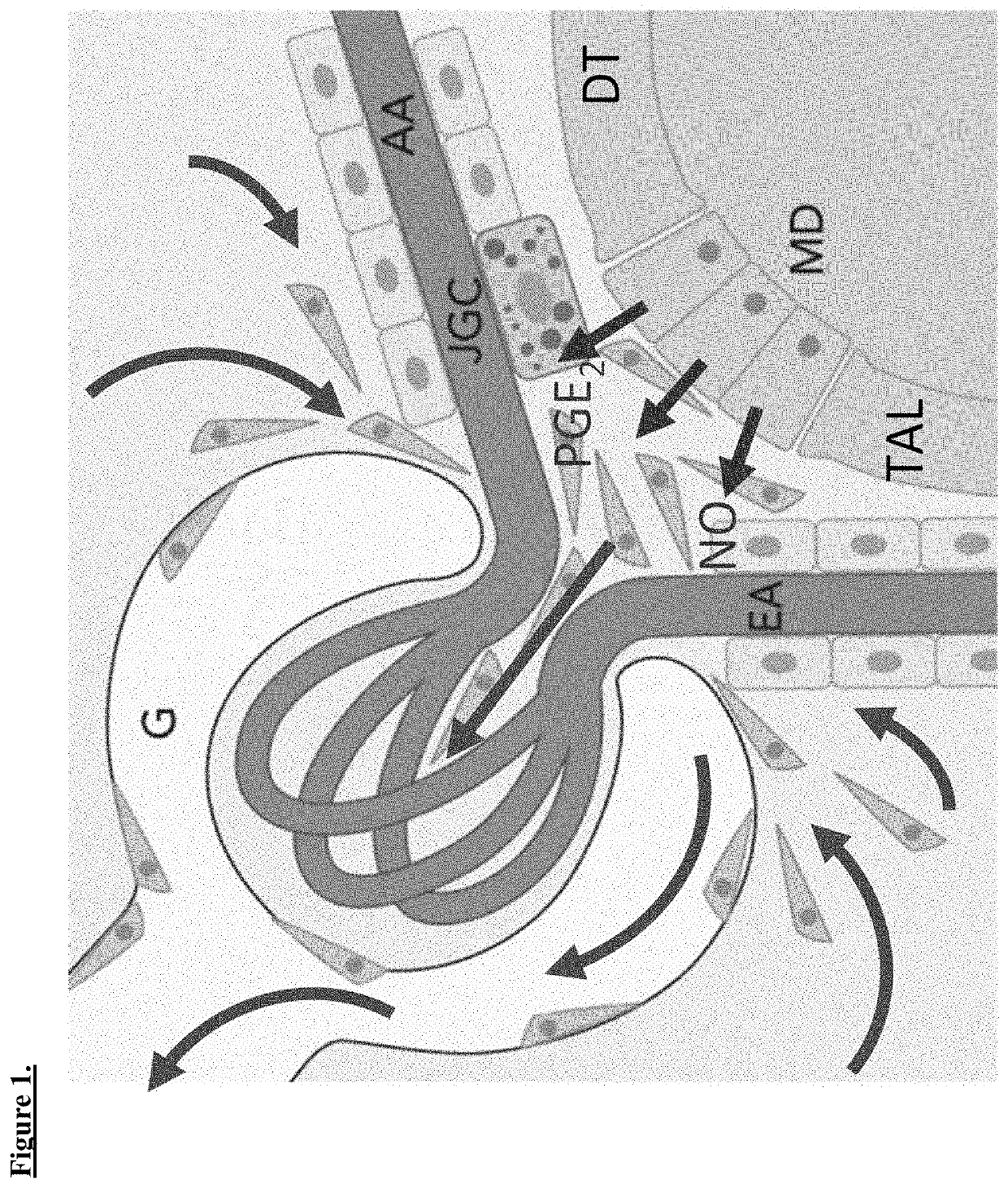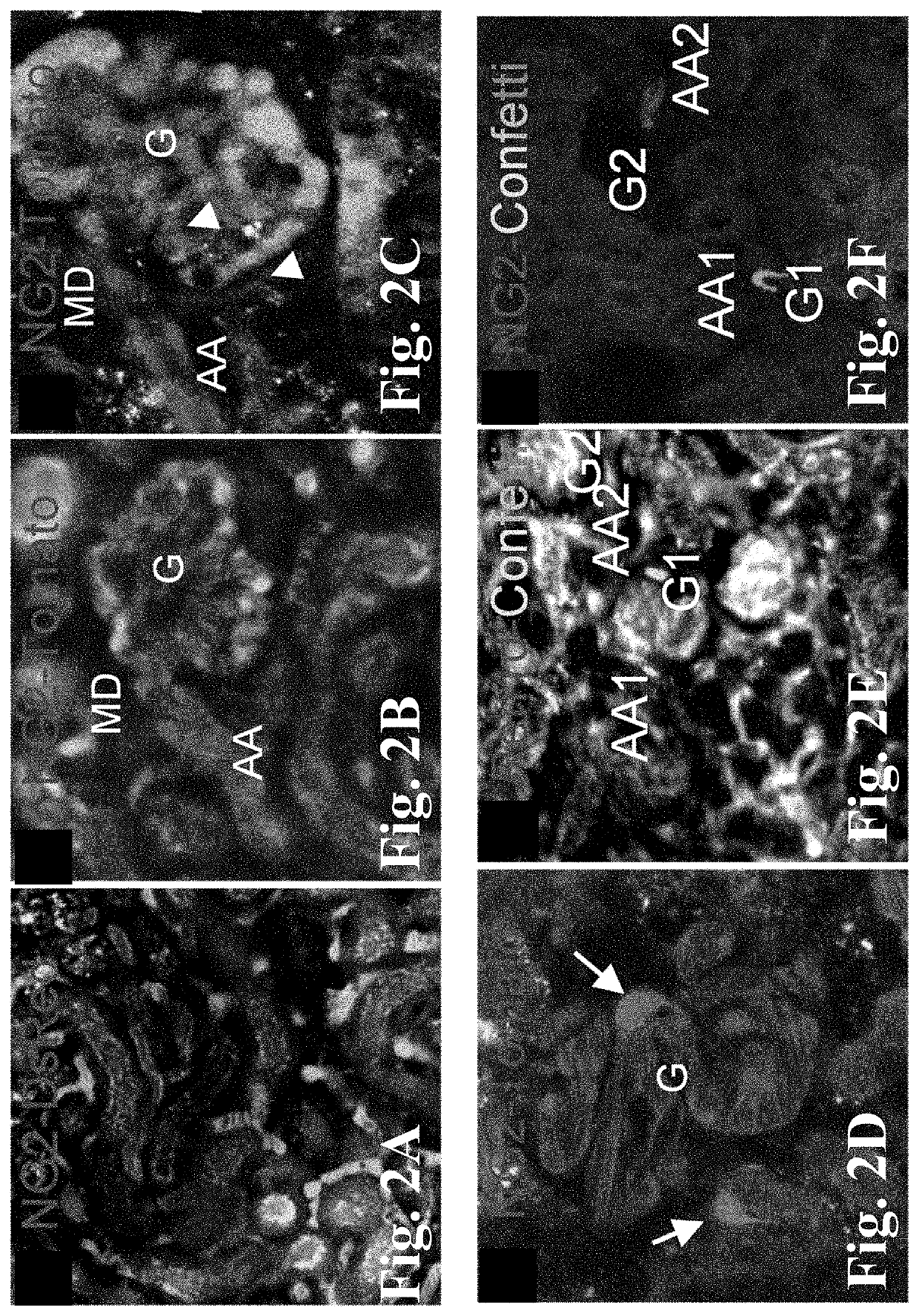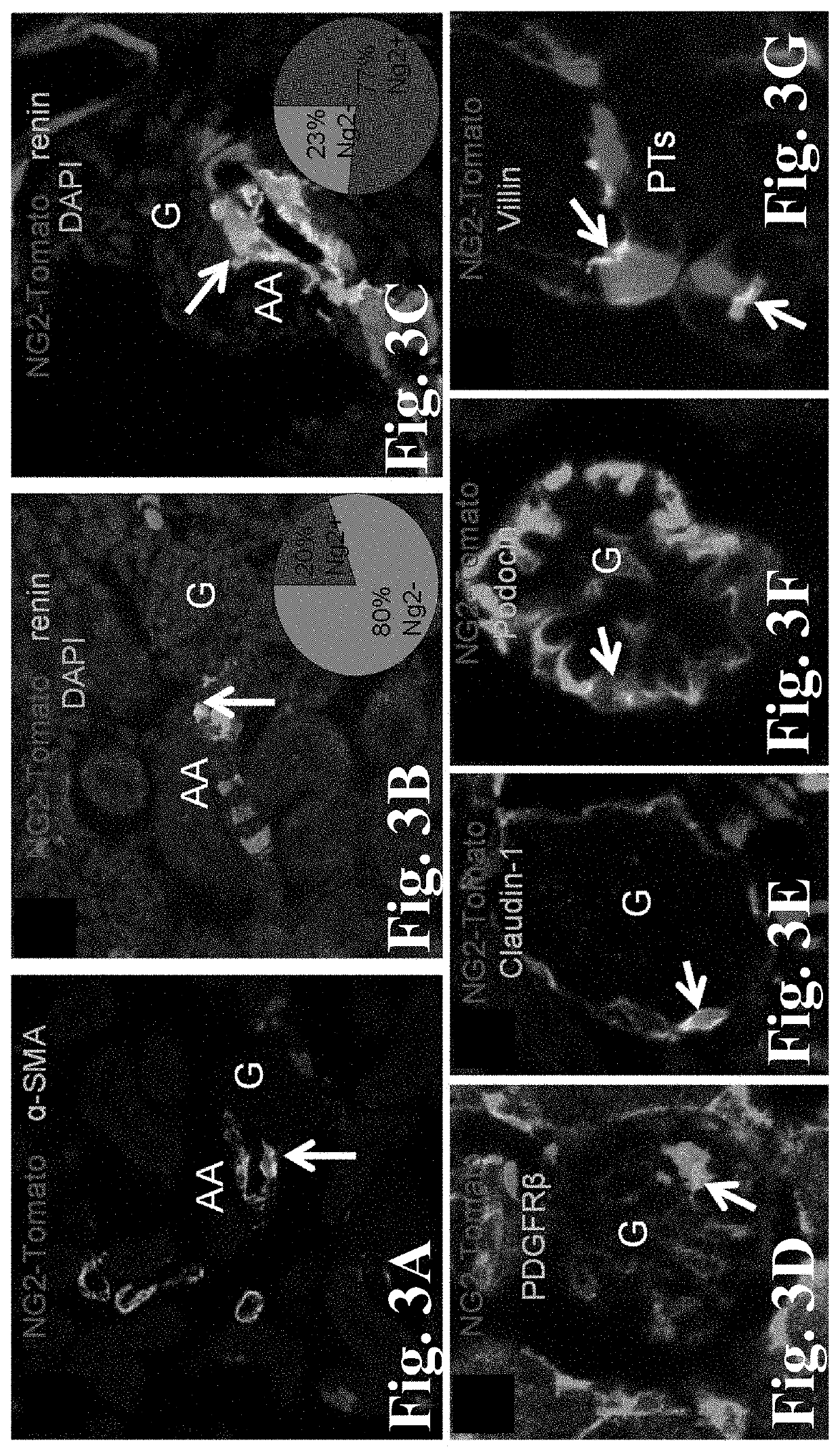Targeting macula densa cells as a new therapeutic approach for kidney disease
a kidney disease and macula densa technology, applied in the field of new drugs for kidney disease, can solve the problems of high-cost renal replacement, no cure for ckd, and normal kidney function requires high-cost renal replacemen
- Summary
- Abstract
- Description
- Claims
- Application Information
AI Technical Summary
Benefits of technology
Problems solved by technology
Method used
Image
Examples
example 1
Functional Characterization of the Novel Renal Tissue Remodeling Function of MD Cell
[0055]This study investigated whether MD cells can induce the mobilization, proliferation, and recruitment (homing) of renal mesenchymal progenitor cells into the JGA, to facilitate vascular and glomerular tissue remodeling. The effects of in vivo MD cell activation (low salt diet+ACEI) or blockade (in vivo cell ablation, selective COX-2 and nNOS inhibitors) on kidney tissue structure and function were studied using new transgenic mouse models (NG2-Tomato / Confetti, MD-GFP, MD-DTA). Regulation of MD fingerprint in stimulated states were analyzed by performing MD cell harvesting, isolation, transcriptome analysis and bioinformatics.
[0056]A critical barrier in understanding the true nature and functions of MD cells has been the technical limitation to study this critically important, but generally inaccessible therefore mysterious cell type in its native environment in vivo. To date, most morphological ...
example 2
Track the Fate and Migration Characteristics of NG2 Cells in Normal and MD-Stimulated Kidneys
[0058]These studies applied genetic cell fate-mapping strategies in new transgenic mice that report for cells of the NG2+ progenitor (NG2-Tomato and Confetti), or alternatively the renin lineage (Ren1d-Confetti) to test if MD stimulating conditions augment the proliferation and migration (homing) of NG2+ cells into the JGA and their recruitment and differentiation into AA vascular smooth muscle, JG renin, mesangial cells, glomerular epithelial cells (both podocytes and PECs), and proximal tubular cells. Adult (6-8 weeks of age), previously tamoxifen-induced (2-3 weeks tamoxifen washout) NG2CreER-Tomato or Confetti mice received low salt+captopril treatment for one week, using sodium deficient diet (from Harlan Teklad, Cat #TD 90228) and 200 mg / L ACE inhibitor captopril in drinking water ad libitum (a well-established strong stimulus to activate the MD and RAS). Control age-matched mice recei...
example 3
Animal Models
[0060]In preliminary work the Inventors established several new transgenic animal models and experimental approaches (FIGS. 2-10), these are:
1. Md-GFP Mice.
[0061]The Inventors developed and successfully established intravital MPM imaging of nNOSCreERT2-KI / TomatofloxSTOPGFP (inducible MD-GFP) mice which in the renal cortex specifically express the intensely green fluorescent protein GFP in MD cells. These mice were created by intercrossing nNOS-CreERT2-KI38 (mice with nNOS promoter-driven, tamoxifen-inducible expression of Cre recombinase (knock-in model) which in the renal cortex provides 100% MD-specific Cre expression) and TomatofloxSTOPGFP (B6.129(Cg)-Gt(ROSA)26Sortm4(ACTB-tdTomato,-EGFP)Luo) mice (both from JAX). These animals express tomato in all cells at baseline. After Cre-mediated excision the Cre-expressing cell lineage will however express the membrane targeted GFP protein (FIG. 8A). MD-GFP mice showed no morphological or functional abnormalities compared to ...
PUM
| Property | Measurement | Unit |
|---|---|---|
| pressure | aaaaa | aaaaa |
| intravital multiphoton microscopy | aaaaa | aaaaa |
| MPM imaging | aaaaa | aaaaa |
Abstract
Description
Claims
Application Information
 Login to View More
Login to View More - R&D
- Intellectual Property
- Life Sciences
- Materials
- Tech Scout
- Unparalleled Data Quality
- Higher Quality Content
- 60% Fewer Hallucinations
Browse by: Latest US Patents, China's latest patents, Technical Efficacy Thesaurus, Application Domain, Technology Topic, Popular Technical Reports.
© 2025 PatSnap. All rights reserved.Legal|Privacy policy|Modern Slavery Act Transparency Statement|Sitemap|About US| Contact US: help@patsnap.com



